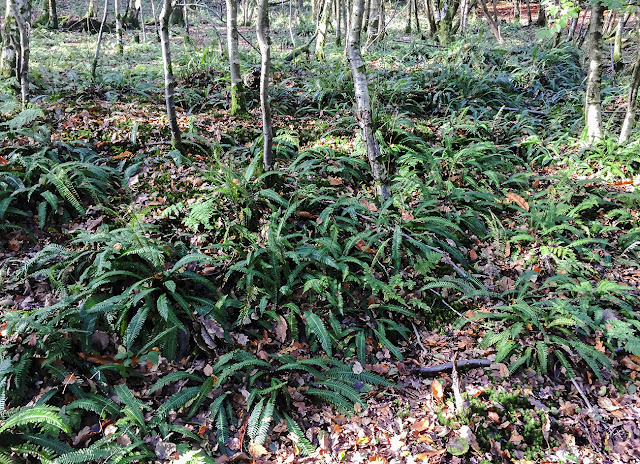 |
| A meadow at Wakehurst, West Sussex. 17 August 2018. |
Wakehurst is a botanic garden in West Sussex, owned by the National Trust but run by the Royal Botanic Gardens, Kew. It's half an hour's drive from my current house and I joined as a friend soon after moving here.
These are just a few shots from a recent visit.
 |
| A path at Wakehurst, West Sussex. 17 August 2018. |
It's styled as a "wild" botanic garden, but it only merits that name in comparison with Kew where almost everything is in glasshouses. It's intensively tended and kept up.
On my way in I noticed some small Wollemi Pines for sale. This is a rare tree. (Wollemia nobilis, family Auracariaceae.
) There are less than 100 specimens known in the wild. As you might expect, these small potted plants were very expensive. But later, on this path, I recognised the young conifers at either side - this is a Wollemi Pine pathway! They are doing very well. I don't think they would be selling them unless there were plenty of spares.
 |
| Sandstone at Wakehurst, West Sussex. 17 August 2018. |
In common with many spots in Sussex, Wakehurst has several sandstone outcrops. Picturesque tree growth like this is easy to find. What's odd about this particular spot is that the path on this side of the wooden bridge does not seem to go anywhere.
 |
| Millennium Seed Bank at Wakehurst, West Sussex. 17 August 2018. |
Outside the Millennium Seed Bank are a set of plots with different soil types - gravel, hillside, chalk, hay meadow, wet meadow and others. It is interesting to see examples of the different ecologies.
 |
| Sign showing various charges at Wakehurst, West Sussex. April and August 2018. |
But one thing they don't seem to be able to do is produce clear and unambiguous signage. The old version (on the left) just stopped my in my tracks. What, it costs £25 to get in if you're a Friend? And why is it free to enter the car park for a day, but also £10 to park for a day?
The new version (probably produced because rates had increased) does away with the first oddity. But it still says that an adult ticket is free. If only the sign had read "Adult Ticket Holders" it would have been quite clear ...



















